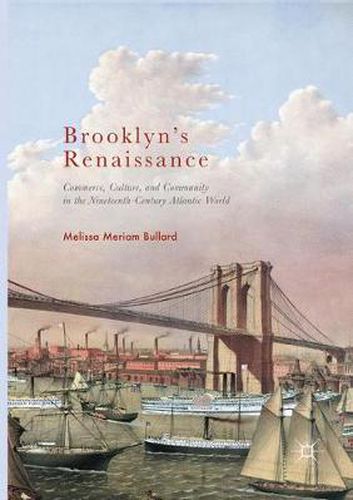Readings Newsletter
Become a Readings Member to make your shopping experience even easier.
Sign in or sign up for free!
You’re not far away from qualifying for FREE standard shipping within Australia
You’ve qualified for FREE standard shipping within Australia
The cart is loading…






This title is printed to order. This book may have been self-published. If so, we cannot guarantee the quality of the content. In the main most books will have gone through the editing process however some may not. We therefore suggest that you be aware of this before ordering this book. If in doubt check either the author or publisher’s details as we are unable to accept any returns unless they are faulty. Please contact us if you have any questions.
This book shows how modern Brooklyn’s proud urban identity as an arts-friendly community originated in the mid nineteenth century. Before and after the Civil War, Brooklyn’s elite, many engaged in Atlantic trade, established more than a dozen cultural societies, including the Philharmonic Society, Academy of Music, and Art Association. The associative ethos behind Brooklyn’s fine arts flowering built upon commercial networks that joined commerce, culture, and community. This innovative, carefully researched and documented history employs the concept of parallel Renaissances. It shows influences from Renaissance Italy and Liverpool, then connected to New York through regular packet service like the Black Ball Line that ferried people, ideas, and cargo across the Atlantic. Civil War disrupted Brooklyn’s Renaissance. The city directed energies towards war relief efforts and the women’s Sanitary Fair. The Gilded Age saw Brooklyn’s Renaissance energies diluted by financial and political corruption, planning the Brooklyn Bridge and consolidation with New York City in 1898.
$9.00 standard shipping within Australia
FREE standard shipping within Australia for orders over $100.00
Express & International shipping calculated at checkout
This title is printed to order. This book may have been self-published. If so, we cannot guarantee the quality of the content. In the main most books will have gone through the editing process however some may not. We therefore suggest that you be aware of this before ordering this book. If in doubt check either the author or publisher’s details as we are unable to accept any returns unless they are faulty. Please contact us if you have any questions.
This book shows how modern Brooklyn’s proud urban identity as an arts-friendly community originated in the mid nineteenth century. Before and after the Civil War, Brooklyn’s elite, many engaged in Atlantic trade, established more than a dozen cultural societies, including the Philharmonic Society, Academy of Music, and Art Association. The associative ethos behind Brooklyn’s fine arts flowering built upon commercial networks that joined commerce, culture, and community. This innovative, carefully researched and documented history employs the concept of parallel Renaissances. It shows influences from Renaissance Italy and Liverpool, then connected to New York through regular packet service like the Black Ball Line that ferried people, ideas, and cargo across the Atlantic. Civil War disrupted Brooklyn’s Renaissance. The city directed energies towards war relief efforts and the women’s Sanitary Fair. The Gilded Age saw Brooklyn’s Renaissance energies diluted by financial and political corruption, planning the Brooklyn Bridge and consolidation with New York City in 1898.